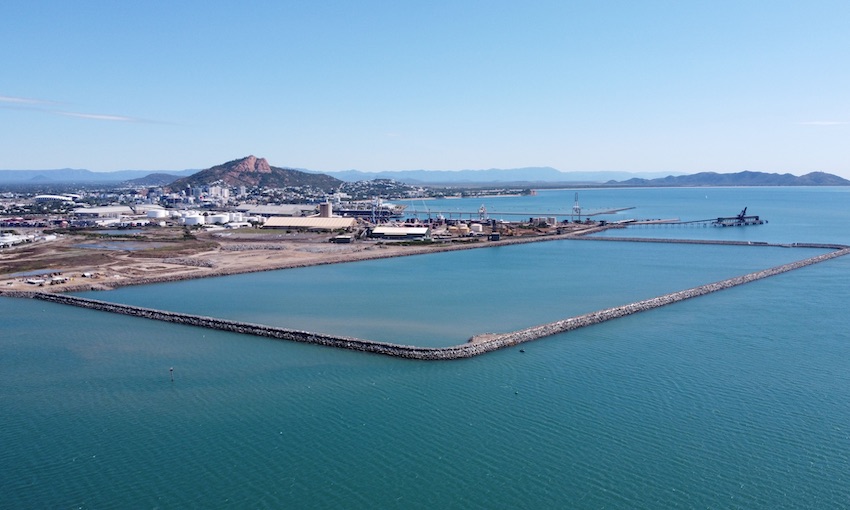THE rock wall that will form part of the reclamation area and support the Townsville port expansion has been completed, as part of the Port of Townsville’s $232-million Channel Upgrade project.
Constructing the 2.2-kilometre rock wall is the first critical step in widening Townsville’s shipping channel to allow larger ships to access the port.
The material recovered as the dredging team starts to widen almost 15 kilometres of sea channels over the next two years will be used to reclaim the area behind the wall and support a 62-hectare expansion.
Trade volumes through the Port of Townsville are expected to triple over the next 30 years.
Queensland minister Mark Bailey said upgrading the port’s channels would support Queensland’s COVID-19 Economic Recovery Plan, unlocking capacity for commercial, defence and cruise ships up to 300 metres long.
“We know that when the port is strong, close to 800,000 Queenslanders reap the benefits,” Mr Bailey said.
“That’s why we’re investing in this largest-ever port upgrade, which is supporting local jobs and providing work to local suppliers now during construction and will expand the trading capacity of one of Queensland’s largest publicly-owned ports.”
Port of Townsville’s chief infrastructure officer, Marissa Wise, said seven local rock suppliers provided 900,000 tonnes of rock, with construction of the 10-metre-high wall requiring specialist knowledge.
“It was a complex project that called on the marine construction expertise of designers, engineers, environmental experts and contractors working together,” Ms Wise said.
“We have used a number of innovative design and construction techniques to ensure the rock wall withstands tidal action, storm surges, cyclones and rising sea levels.”
During the peak construction phase of the rock wall there were 200 trucks passing through the site gates every day to deliver over 20,000 tonnes of rock a week.
Dredging to widen Townsville’s 14.9-kilometre shipping channel will commence shortly and is expected to take two years.
The Port has committed $17 million for environmental monitoring and management programs as part of the project, including those covering dolphins, turtles, seagrass, coral and shorebirds, with an Independent Technical Advisory Committee providing expert oversight.

